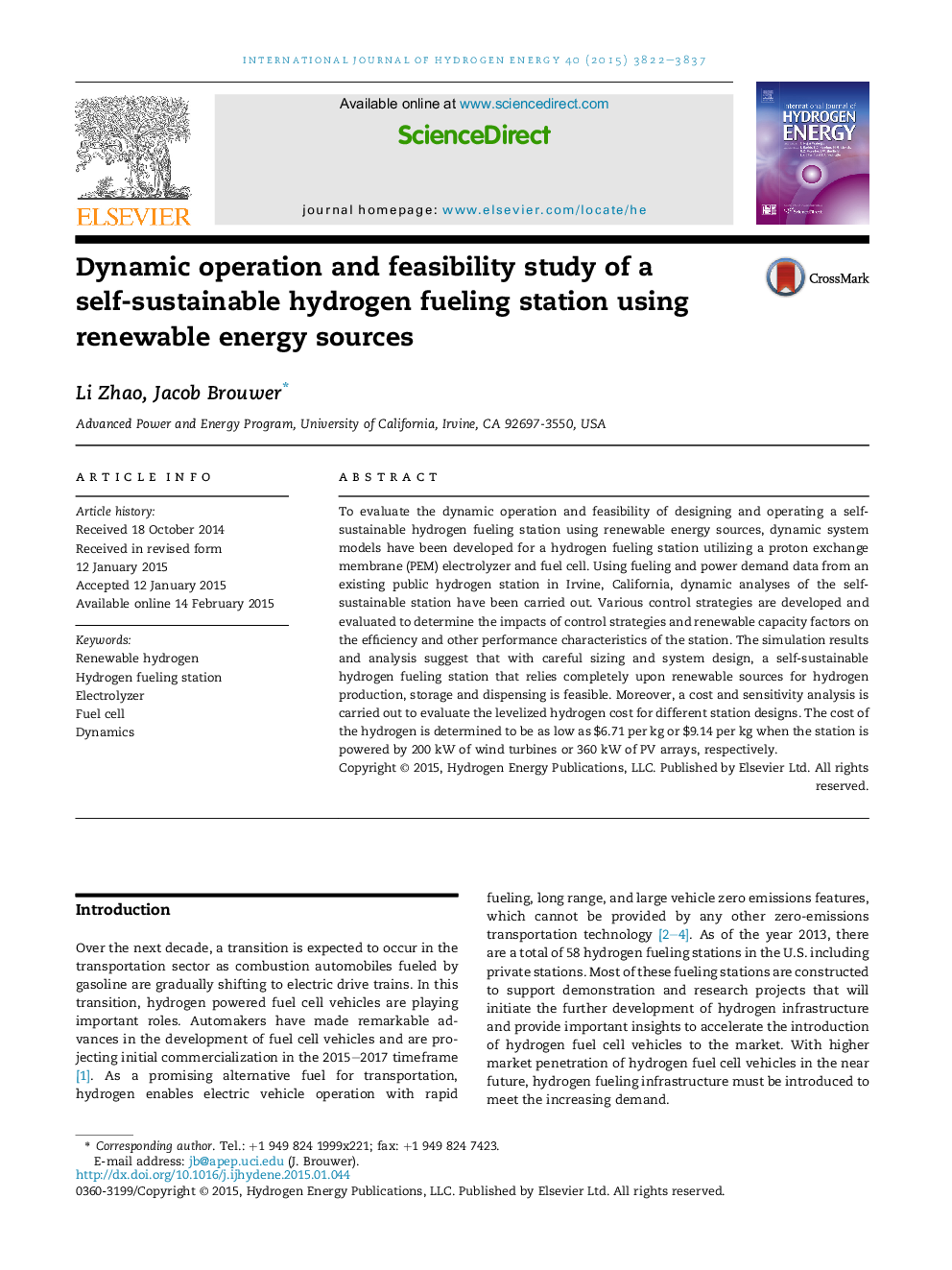| Article ID | Journal | Published Year | Pages | File Type |
|---|---|---|---|---|
| 1275809 | International Journal of Hydrogen Energy | 2015 | 16 Pages |
•Dynamics of a hydrogen fueling station using renewable energy sources are simulated.•Station power should be supplied by renewable sources directly whenever possible.•Renewable capacity factor significantly affect station operation and hydrogen cost.•Station component (PV, wind, electrolyzer, fuel cell, storage) sizing is evaluated.•Hydrogen costs $6.71/kg and $9.14/kg for the wind and PV scenarios, respectively.
To evaluate the dynamic operation and feasibility of designing and operating a self-sustainable hydrogen fueling station using renewable energy sources, dynamic system models have been developed for a hydrogen fueling station utilizing a proton exchange membrane (PEM) electrolyzer and fuel cell. Using fueling and power demand data from an existing public hydrogen station in Irvine, California, dynamic analyses of the self-sustainable station have been carried out. Various control strategies are developed and evaluated to determine the impacts of control strategies and renewable capacity factors on the efficiency and other performance characteristics of the station. The simulation results and analysis suggest that with careful sizing and system design, a self-sustainable hydrogen fueling station that relies completely upon renewable sources for hydrogen production, storage and dispensing is feasible. Moreover, a cost and sensitivity analysis is carried out to evaluate the levelized hydrogen cost for different station designs. The cost of the hydrogen is determined to be as low as $6.71 per kg or $9.14 per kg when the station is powered by 200 kW of wind turbines or 360 kW of PV arrays, respectively.
